There are many styles of Yoga Therapy out there. In general, Yoga Therapy offers poses, breathwork, mudras, and other yogic modalities that will help the individual work with symptoms such as headaches, anxiety, insomnia or chronic pain. Yoga Therapy is a wonderful addition and a natural, healthy complement to other treatments a person may require.
What Makes I AM Yoga Therapy Unique?
I AM Yoga Therapy™ is designed to include the added dimension of exploring the invisible root that may be causing or exacerbating visible effects. We approach symptoms as not just as a singular event, but as the result of constellations of thoughts, feelings, unresolved experiences and holding patterns that interact with one another to create symptoms.
Our Primary Focus is Energy
According to Yoga, prana or energy is the animating force which vitalizes the body. This invisible energy is primarily carried into the body with the breath and is the force that powers all life-giving functions. Without prana the body dies. When the flow of prana is compromised, the energy system of the body (comprised of chakras and energy meridians called nadis) does not receive enough prana to fully power, nourish and heal the body in the same way that a light bulb does not receive enough electricity to fully power it. The light dims and the body weakens over time – setting the stage for disease. This is very similar to other eastern approaches such as acupuncture.
Energy flow can be compromised or blocked due to thinking, behavioral or postural patterns. It can also be blocked through unprocessed experiences that we have not fully dealt with. Just because we have pushed through an event and told ourselves to move on, these unresolved events don’t suddenly disappear. They remain circulating in the system, trying to surface in different ways so that they may be addressed and finally released. If this does not happen, the intelligence of the body will often increase the volume, creating more and more symptoms until we have no choice but to pay attention.
Unresolved Energies Move into Density
Everything is made up of energy. Einstein says, “matter is energy that has been reduced to the point of visibility.” Whether due to an injury, habitual thinking patterns, or a combination of the two, stagnated or repetitive energies tend to densify and can create subtle disturbances in the mind and barriers in the body. I call this “frozen prana” or stagnated energy. “Frozen prana” accumulates in the physical body. Over time this frozen prana can manifest into a dense immobile ice-like quality in various areas.
All blocks— whether physical, mental or emotional—are composed of varying degrees of density. If we can understand energy and how to resolve it, we can work at any one of these levels and release blocks that may be keeping the body from healing itself.
What Does an I AM Yoga Therapy Session Involve?
An I AM Yoga Therapy practitioner creates the environment for such blockages to surface and be consciously released through yoga therapy poses combined with yoga-based facilitation techniques which foster a subtler awareness within the asana.
This could mean guiding clients with physical ailments (lower back, neck, shoulders, hips, etc) into poses that not only relieve the physical symptoms, but also surface old patterns, beliefs and unprocessed emotions and experience that may be keeping the body from optimally healing itself.
The body is intelligent. It is always trying to move us towards a state of health. Our approach is not focusing on healing so much as removing the obstacles that are in the way of the body healing itself.
How Do We Access These Blocks?
Energy (prana) reveals itself as felt sensations. Sensations are the visible, detectable aspect of energy revealing itself through the body. By working with sensation, we can work with energy, and the body becomes the access point to work with the subtle, invisible causes.
Usually we move around blocks by physically pushing through the barrier. This allows the body to open; but does not dissolve the subtler cause of the block.
We may also avoid a block by compensating around it. The way we walk, sit, stand and even do yoga poses is unconsciously orchestrated to keep these blocks in place. Over time these avoidance patterns create a domino effect, putting the body at greater risk for injury or chronic pain.
Cultivation and Exploration Poses
I AM Yoga Therapy divides poses in two major sub-categories. Cultivation poses focus on movements such as traction, rocking, and long fluid movements which promote circulation, fluidity in the joints, reduced inflammation, and increased range of motion. Cultivation poses are also ideal to help individuals drop out of the mind and reconnect with the body.
The second category of I AM Yoga Therapy poses are Exploration Poses. These are more static poses that are held for longer periods of time (such as single leg forward bend). Here we train practitioners to help their client gently and deliberately encounter what we call “the edge”. Using traditional poses, prop supported poses or assisted poses, we approach the place where intense sensation or holding is felt. We gently and deliberately encounter these blocks by working at the edge.
The Edge
The edge is where there is intensity in the body, but not pain. Using breath, attention and with coaching, the recipient can stay present and open to the experience when they would normally close down and protect. The client learns to notice that tipping point when the body wants to shut down or the mind wants to escape. Instead of forcing or avoiding, we learn stay right at that place where intensity is present.
These are some of the phrases we use to encounter the edge deliberately rather than forcefully:
- Notice that tipping point when the body wants to shut down or the mind wants to escape. Do not force or avoid. Stay right at that place where intensity is present.
- Use the breath to help stay with the intensity rather than trying to make it go away.
- Soften around the areas that normally want to close down – both physically and mentally.
When the edge moves, this is an indication the body and subtle blockages are releasing. Sometimes there is an emotional or energetic release as well such as tears, tingling, streaming, or insight/knowing. At other times, a profound sense of stillness results.
Facilitation techniques
Verbal cues and facilitation techniques support the recipient to stay present to the sensations without getting into the story about them. Just being present to what is present is enough. It is less about the story and more about the energy of unresolved events that haven’t had the opportunity to be fully acknowledged and allowed to pass through.
- Breathe into the area of holding
- Be with what it there and not trying to make it go away.
- Bring attention to feeling the sensation as it is.
- Explore that which is usually avoided and let it be fully felt.
- Relax, don’t resist
- Be soft, spacious, at ease
- Breath with what is present
- Be interested and curious with what you are feeling.
- Notice what happens — remain relaxed, present and connected
Energy Returns to Consciousness
With conscious attention and deliberate entry into the pose, previously trapped energy is now freed. The Parasympathetic and Sympathetic Nervous system is brought into balance. Released energy creates spontaneous states of deep healing, meditation and restoration. Most people feel a profound sense of relaxation and stillness overcome them. This accelerated energy flow is supported with Yoga Nidra techniques (sleep meditation) which enhance the effect even more.
Benefits of I AM Yoga Therapy include:
- Increased range of motion
- Reduced stress on joints
- Reduced pain and inflammation
- Increased energy and sense of wellbeing
- Calm mind and release of mental and emotional tensions
- Faster healing and recovery from injuries and chronic conditions
- Improved posture
- Feeling lighter
The Future of Yoga Therapy
Yoga Therapists are increasingly working in a complementary capacity alongside medical professionals including physical therapists, chiropractors, in pain clinics and even in doctor’s offices. It is an ideal addition for yoga teachers, bodyworkers, therapists, counselors, and individuals interested in advanced yogic studies, techniques and practices to maintain and regain health.
Yoga Therapy practices include hands free as well as hands on techniques, making it ideal for a variety of settings. For information & further training search here.
In summary:
- I AM Yoga Therapy can be a helpful complement to traditional approaches that work exclusively with the mind or the body alone.
- It works not just with the visible symptoms, but the invisible causes
- This approach uses deliberate and conscious entry into yoga poses not just to gain their physical benefits but to release underlying mental and emotional tensions
- Enhanced physical functioning from yoga therapy supports mental balance while subtler mental and emotional patterning is reoriented to positively influence the health of the physical body.
Resources:
100 hr Yoga Therapist Training
40 hr Online Training (hours can be used to go on to further training)
800hr Accredited I AM Yoga Therapy Training
Originally published online at www.kaminidesai.com on May 4, 2021
Further Reading
Check out Kamini’s interview featured on MysticMag.com here.






